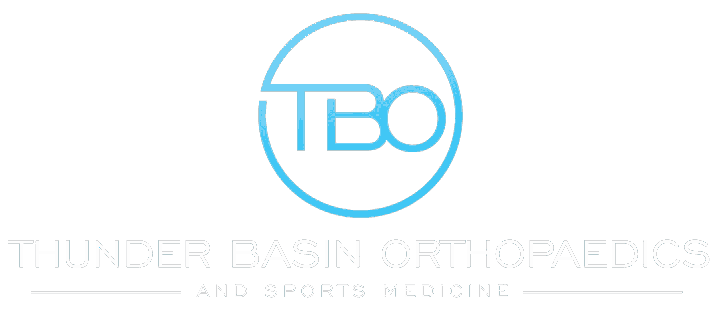If you have a chronic hip problem, your orthopaedic surgeon might recommend looking into a hip arthroscopy for pain relief. But, like any surgery, you may feel anxious about going under the knife.
Hip injuries and conditions are not uncommon. Unfortunately, many people suffer every day. At Thunder Basin Orthopaedics, we specialize in treating various conditions, including those that can be helped with hip arthroscopy. Some of these include hip dysplasia, hip joint infections, and general injuries to the hip area.
But, how is a hip arthroscopy done? How is it different from open surgery? Today we will take a closer look at the procedure and help you better understand your treatment options.
Contents
What is a Hip Arthroscopy?
Hip arthroscopy is a surgical procedure where an orthopedic surgeon can view the hip joint without the need for a large incision in the skin or other soft tissues — the results obtained from the procedure help treat and diagnose many hip issues while being minimally invasive.
During the procedure, the surgeon places a small camera, or arthroscope, inside your hip joint. The camera’s view of your joint is displayed on a video monitor, and your surgeon uses the video feed to guide tiny surgical instruments and conduct the procedure.
The surgical instruments and the arthroscope are very thin, so your surgeon can make tiny incisions and leave the tissues around the area unaffected by their presence. In open surgery, much larger incisions would be made, and recovery time would be much more significant. Using an arthroscope leaves the patient in less pain after the procedure and shortens recovery time considerably.
The Anatomy of the Hip
Your hip is a ball-and-socket joint. The socket is created by the acetabulum, which is a part of the large pelvis bone. The femoral head is the ball, which is the top end of the femur or thighbone.
Articular cartilage is a slippery tissue that covers the surface of the ball and the socket. This creates a smooth surface that aids the bones in gliding across each other quickly.
The acetabulum is surrounded by strong fibrocartilage called the labrum. The labrum forms a gasket around the socket.
Ligaments are the bands of tissue that surround the joint. The ligaments form a capsule that keeps the joint in place. The capsule’s undersurface contains a thin membrane called the synovium. The synovium creates synovial fluid, which lubricates the hip joint.
Common Conditions that Require a Hip Arthroscopy
If you have a painful condition and nonsurgical treatment isn’t helping, your doctor may recommend a hip arthroscopy.
Forms of nonsurgical treatment include:
- Rest
- Physical Therapy
- Medications to reduce inflammation
- Injections to reduce inflammation
Hip arthroscopy can relieve many painful symptoms for various problems that cause damage to the labrum, articular cartilage, or any of the joint’s soft tissues. Many of these problems may be the result of injury. But, several conditions can cause these problems, including:
- Hip joint infection
- Snapping hip syndromes result in a tendon scraping across the outside of the joint. The snapping or popping is generally harmless and doesn’t require treatment. Sometimes the tendon is damaged, though, from the repeated rubbing.
- Femoroacetabular impingement (FAI) is a disorder of bone overgrowth along the acetabulum, or pincer impingement, or on the femoral head (cam impingement). The overgrowth, or spurs, damages the hip’s soft tissues while in motion.
the socket.
- Synovitis results in inflammation of the tissues that surround the joint.
- Dysplasia is a condition where the hip socket is unusually shallow. This condition creates more stress on the labrum, making it more challenging to keep the femoral head inside.
- Loose bodies are bone fragments or cartilage which become loose and move and can cause inflammation, pain, and other more serious complications.
Health Risks, Instructions & Anesthesia
Before you obtain the procedure, there’s a great deal of planning to be done. Your orthopedic surgeon might have you see your primary care doctor analyze your general health. This practice can help identify anything that might cause issues with the surgery. The tests they perform will depend on your health risks.
For people with generally good health, the procedure is usually performed as an outpatient. Therefore, you will not need to stay overnight in the hospital.
The hospital will ask questions about your medications and other parts of your health and give you additional instructions. Ensure you obtain their instructions on your medications and their general instructions, such as not eating or drinking before the procedure.
An anesthesia team will evaluate you before the surgery, and you will likely be placed under general anesthesia. This means you will be asleep during the operation.
Recovery from a Hip Arthroscopy
After the procedure, you will spend a couple of hours in the recovery room before being discharged to go home. Someone will need to drive you and stay with you for the first night (or longer). After that, you will be on crutches or a walker for at least one to two months.
You will feel some pain while you are healing. You will work with your doctors and nurses to reduce your pain. You may be prescribed medications to help with this process. These can include painkillers and anti-inflammatory drugs.
Your surgeon will create a rehabilitation plan for you to be pain-free and wholly rehabilitated in the end.
Make an Appointment
Whether you think you may need surgery or have another orthopedic concern, Thunder Basin Orthopaedics and Sports Medicine can help.
We specialize in a variety of areas, including:
- Minimally Invasive Surgery
- Sports Medicine
- Joint Replacements
- Fractures/Traumatic Injuries
You don’t need to live your life in pain. Contact us today for an appointment.


